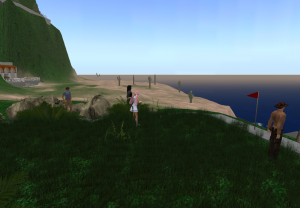Author Archives: Lisa Brundage
sample post
For Discussion 11/28
Final Report Guidelines
You can find the guidelines here!
But here’s a C&P of them.
Every report must include
Title or cover page
Table of contents
Should include lists of figures and tables if applicable
Abstract
Body
Note: You will likely want more specific subheadings in each area
- Introduction: Briefly explain the issue you are examining.
- Background: What is the relevant history of this topic?
- Methods: your method is library research, and you are working mostly with secondary sources. Consider the methods your sources used in their research. Indicate what they are, and any limitations involved.
- Findings: What did you learn?
- Discussion of results: What is significant about what you learned?
- Conclusions/Recommendations
References
Attachments or Appendices
Guidelines adapted from Diana Reep and the Purdue OWL
Final Report Planning Document
“Cloudy with a chance of hybrid vortices”
This caught my eye today–we’re all watching Sandy, but luckily most of the information out there is more direct and simple than this! Maybe we can try rewriting it in class next week.
Readings
You will need two books for this course:
Diana Reep’s Technical Writing, 8th Ed
Luciano Flordi’s Information: A Very Short Introduction
Links to other readings will be posted on this page in reverse chronological order–so the reading for the next class should be the first one you see below!
Information Architecture Reading (Read Before Oct 31)
Before class on Oct 31, read:
Reep, Chapter 7 (“Writing for the Web”)
Discussion: What makes AV materials good?
What makes them good
- Short, meaningful information: it doesn’t have paragraphs of text that compete with the spoken presentation
- Something that the audience can relate to–something appealing
Engages the audience
Strong relationship between the presentation materials and the supporting AV: keeps the focus on the central message
Reliability: help convey believability, doesn’t detract from content of presentation
Strong relationship between form and function: the materials suit the topic and help to make it more accessible
What our guidelines are
-
Using the tool as it was intended
Manipulating tool to do what YOU want it to do, not what it tells you to do
Facts: diagrams, charts, data in appropriate (easily understood) formats
Simplicity: ease of understanding–form and content match
Sound, if appropriate
Video, if appropriate
Creativity–creates connection to the presentation
.




